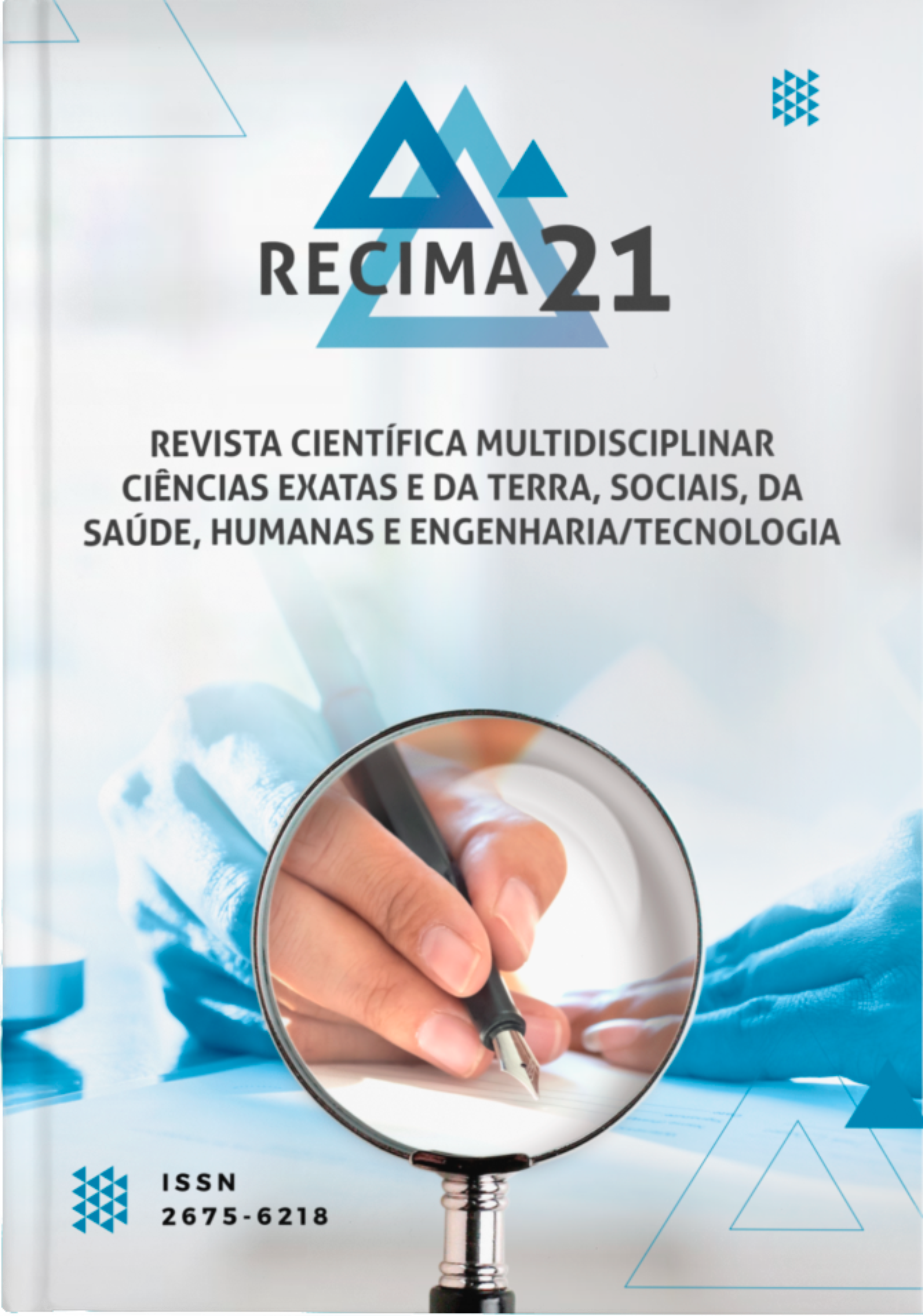CAUDA EQUINA SYNDROME CAUSED BY LUMBAR DISC HERNIATION
DOI:
https://doi.org/10.47820/recima21.v2i8.626Keywords:
cauda equina, herniated disc, sciatica, saddle anesthesyAbstract
Cauda Equina syndrome is a clinic complication wich is characterized by the compression of the nerve roots. It has symptoms like strong backache, sciatica, saddle anesthesia, sexual and sphincter dysfunction and weakness in lower members. This report brings the pacient MRB, 35, male, teacher, who has backache as a clinical condition for 1 year. His physical examination presents painful facies, in the abdominal palpation, presents painful dilated bladder. In the neurologic exam, Lasegue + in left lower leg (LLL), Kernig + (LLL), saddle anesthesia, hypoesthesia of the posterior region (LLL), sole anesthesia, bilateral pattelar osteotendinous hyporeflexia, achilles reflex decreased. Into the magnetic resonance stands out a diffuse disc bulging, straightening the ventral face of the dural sac, standing out a posteromedian/paramedian extruded component in the left, on L5-S1 level, with a little caudal deviation and nerve root compression emerging from S1 into the left, and contact with the S1 into the right, and emerging from S2 into the left. The patient underwent surgery, with clinical improvement and was referred for the physiotherapy and outpatient follow-up. The commonest etiology of the cauda equina syndrome is herniated disc. Delayed diagnostic is the main cause of sequels, being the surgical intervention within 48 hours the most ideal alternative. Imaging is the gold standart for the diagnosis, and the clinic anamnesis too. The most influencing factors to the prognosis is the severity of sphincter disorder and the perianal hypoesthesia, thus, it´´´s avaliated in the admissional avaliation. This report is coherent with the literature findings.
Downloads
References
Berg EJ, Ashurst JV. Anatomy, Back, Cauda Equina. In: StatPearls [Internet]. Treasure Island (FL): StatPearls Publishing; 2021 Jan–. PMID: 30020623.
Ankith NV, Rajasekaran S, Ks SVA, Kanna RM, Shetty AP. Factors that influence neurological deficit and recovery in lumbar disc prolapse-a narrative review. Int Orthop. 2019 Apr;43(4):947-955. DOI: 10.1007/s00264-018-4242-y. Epub 2018 Nov 24. PMID: 30474689.
Mcnemee J, Flynn P, O´leary S, Love M, Kelly B. Imaging in Cauda Equina Syndrome – A Pictorial Review. Ulster Medical Journal. 2013 Maio;82(2). Available from URL: https://www.ums.ac.uk/.
Fuso FAF, Dias ALN, Letaif OB, Cristiante AF, Marcon RM, Barros Filho TEP. Epidemiological study of cauda equina syndrome. Acta Ortop Bras. [online]. 2013;21(3):159-62. Available from URL: http://www.scielo.br/aob.
Low JCM, Rowland D, Kareem H. L1/2 Intradural Disc Herniation with Compression of the Proximal Cauda Equina Nerves: A Surgical Challenge. World Neurosurgery. 2020;42:147-151. ISSN 1878-8750. https://doi.org/10.1016/j.wneu.2020.06.163
Shen L, Fang L, Qiu, Y, Xing S, Chen D, He X, et al. Study on different surgical approaches for acute Lumber disk protrusion combined with Cauda Equina Syndrome. International journal of clinical and experimental pathology. 2014;7(12):8875–8880.
Yoon WW, Koch J. Herniated discs: when is surgery necessary? EFORT Open Rev. 2021 Jun;6(6):526-530. doi: 10.1302/2058-5241.6.210020. PMID: 34267943; PMCID: PMC8246101.
Pereira CU, et al. Síndrome da cauda eqüina devido à hérnia discal lombar. Apresentação de caso. Revista Brasileira de Neurologia e Psiquiatria. 2013;17(3):41-48
Downloads
Published
How to Cite
Issue
Section
Categories
License
Copyright (c) 2021 RECIMA21 - Revista Científica Multidisciplinar - ISSN 2675-6218

This work is licensed under a Creative Commons Attribution 4.0 International License.
Os direitos autorais dos artigos/resenhas/TCCs publicados pertecem à revista RECIMA21, e seguem o padrão Creative Commons (CC BY 4.0), permitindo a cópia ou reprodução, desde que cite a fonte e respeite os direitos dos autores e contenham menção aos mesmos nos créditos. Toda e qualquer obra publicada na revista, seu conteúdo é de responsabilidade dos autores, cabendo a RECIMA21 apenas ser o veículo de divulgação, seguindo os padrões nacionais e internacionais de publicação.

 Clique para ver detalhes
Clique para ver detalhes 











